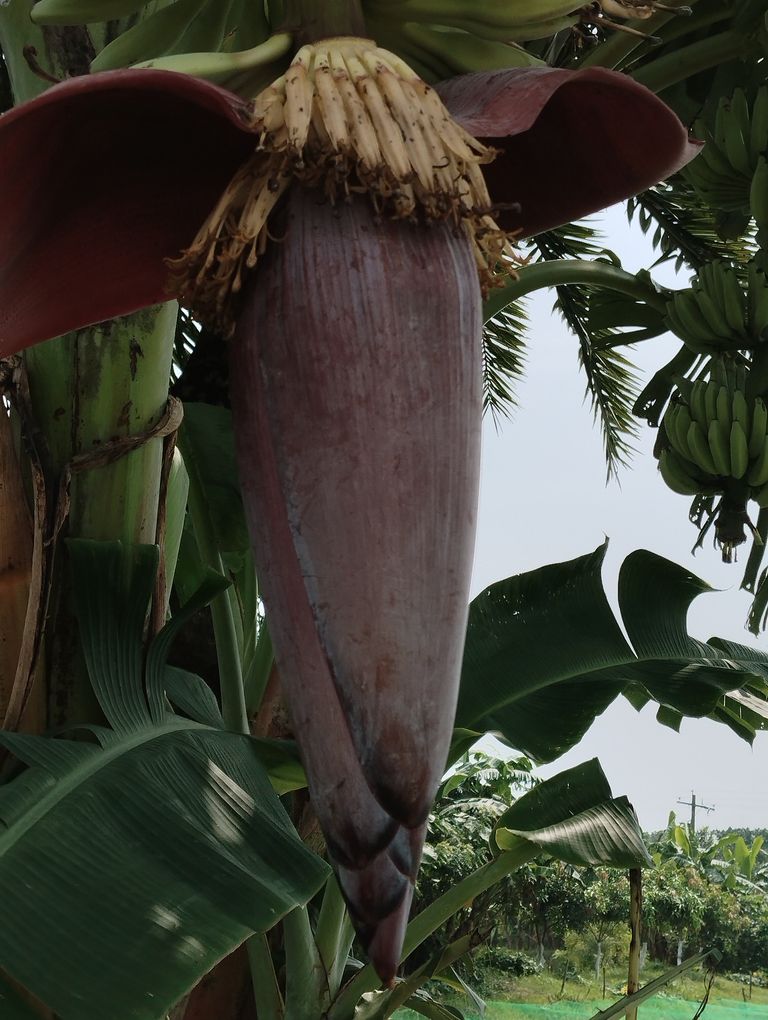Profitable College Farming Methods.

Agriculture, once considered a traditional and rural occupation, is now emerging as a highly profitable venture, even within college campuses. With the increasing awareness of sustainable practices, organic farming, and technological advancements, students and educational institutions are turning their attention towards farming as a business opportunity. College farms not only provide hands-on learning experiences but also serve as a source of income and sustainability. This blog explores various profitable college farming methods that can be implemented on campuses to benefit both the students and the institution.
- Hydroponics: Farming Without Soil
Hydroponics is a soil-less farming technique that allows plants to grow in a nutrient-rich water solution. This method is ideal for colleges with limited space or areas unsuitable for traditional farming. Hydroponics systems can be set up in small greenhouses or even indoors.
The main advantage of hydroponics is that it uses less water than conventional farming, requires no pesticides, and produces faster-growing, high-yield crops. Lettuce, spinach, herbs, and tomatoes are popular crops grown hydroponically. Once set up, the system can be maintained by students, and the produce can be sold to local markets or even used in the college cafeteria, generating a steady income.
- Aquaponics: A Sustainable Ecosystem
Aquaponics combines aquaculture (raising fish) with hydroponics to create a closed-loop system where the waste produced by the fish provides nutrients for the plants, and the plants, in turn, purify the water for the fish. This method is both environmentally friendly and space-efficient, making it an excellent choice for college farms.
Aquaponics systems can be scaled to fit any space, from small indoor setups to larger outdoor operations. Common fish species raised in aquaponics systems include tilapia and catfish, while plants like leafy greens, herbs, and strawberries thrive in this environment. The dual income from fish and vegetables makes aquaponics a profitable venture for college farms.
- Organic Farming: High-Demand Produce
Organic farming focuses on growing crops without synthetic fertilizers, pesticides, or genetically modified organisms (GMOs). The demand for organic products has surged in recent years, making it a profitable farming method. Colleges can dedicate small plots of land to organic farming, where students can learn about sustainable agriculture while growing high-value crops.
Organic vegetables, fruits, and herbs can be sold at local farmers' markets, grocery stores, or through community-supported agriculture (CSA) programs. The educational value combined with the commercial viability of organic farming makes it an attractive option for college farms.
- Greenhouse Farming: Year-Round Production
Greenhouse farming allows colleges to grow crops year-round, regardless of the climate. A greenhouse provides a controlled environment where temperature, humidity, and light can be regulated to optimize plant growth. This method is particularly beneficial in regions with harsh winters or unpredictable weather conditions.
Crops like tomatoes, peppers, cucumbers, and flowers can be grown in greenhouses and sold for profit. Additionally, greenhouses can be used for educational purposes, giving students hands-on experience in plant biology, environmental science, and agricultural technology.
- Beekeeping: Pollination and Honey Production
Beekeeping is another profitable farming method that can be easily implemented on college campuses. Bees are essential pollinators for many crops, and their honey production offers a valuable product that can be sold locally or used within the college community.
Beekeeping requires relatively low investment and maintenance, making it an ideal project for college students. Honey, beeswax, and other bee-related products like candles and skincare items can be sold for a profit. Additionally, bees improve the health of nearby gardens and farms by enhancing pollination, increasing crop yields.
- Mushroom Farming: Low Space, High Yield
Mushroom farming is a profitable venture that requires minimal space and investment. Mushrooms can be grown indoors in controlled environments, making it an ideal project for colleges with limited land. Oyster mushrooms and shiitake mushrooms are particularly popular for commercial cultivation.
Mushrooms are in high demand in restaurants, grocery stores, and farmers' markets. Colleges can sell fresh mushrooms or offer value-added products like dried mushrooms, mushroom powders, or mushroom-based snacks. The quick turnaround time for mushroom cultivation means that multiple harvests can be obtained within a year, increasing profitability.
- Vertical Farming: Maximizing Space Efficiency
Vertical farming involves growing crops in stacked layers, either indoors or outdoors, to maximize space efficiency. This method is particularly useful for urban colleges or institutions with limited land resources. Vertical farms use artificial lighting, controlled environments, and hydroponic or aeroponic systems to grow crops efficiently.
Leafy greens, herbs, and microgreens are popular choices for vertical farming due to their short growth cycles and high market demand. The produce can be sold to local restaurants, grocery stores, or through subscription boxes, providing a steady income stream for the college. Vertical farming also serves as a cutting-edge learning opportunity for students interested in agricultural technology and urban farming.
- Livestock Farming: Meat, Dairy, and Eggs
For colleges with more land available, livestock farming can be a lucrative option. Raising chickens, goats, sheep, or cows provides multiple income streams, including meat, dairy, and eggs. Livestock farming also offers students valuable hands-on experience in animal husbandry, veterinary science, and sustainable agriculture.
Colleges can sell fresh eggs, milk, cheese, yogurt, and meat products to the local community or use them in their cafeterias. Additionally, livestock manure can be composted and used as organic fertilizer for college farms, creating a sustainable cycle of production.
- Composting: Turning Waste into Profit
Composting is an environmentally friendly way to recycle organic waste into nutrient-rich fertilizer. Colleges can set up composting systems to process food waste from cafeterias, yard waste, and farm residues. The resulting compost can be used to fertilize the college's farm, garden, or landscaping projects, reducing the need for chemical fertilizers.
In addition to reducing waste, composting can be a profitable venture. Colleges can sell compost to local farmers, gardeners, or landscapers. Offering composting workshops or services to the community can also generate additional income while promoting sustainability.
- CSA Programs: Direct-to-Consumer Sales
Community-supported agriculture (CSA) programs allow colleges to sell produce directly to consumers through subscription-based models. Customers pay upfront for a share of the farm's harvest, receiving weekly or bi-weekly boxes of fresh vegetables, fruits, herbs, and other farm products. CSA programs provide a steady source of income for college farms and foster a sense of community between students and local residents.
Colleges can offer CSA subscriptions to faculty, staff, students, and the surrounding community. This direct-to-consumer model eliminates the need for middlemen, ensuring higher profits for the farm.
Conclusion
Farming on college campuses is no longer just an educational endeavor; it has the potential to become a profitable business that benefits both the students and the institution. By adopting innovative farming methods such as hydroponics, aquaponics, organic farming, and vertical farming, colleges can create sustainable agricultural practices that generate income, reduce environmental impact, and provide valuable learning opportunities for students.
Whether it’s growing vegetables, raising livestock, or managing a greenhouse, college farming offers a wide range of possibilities for profitability and sustainability. By integrating these methods into the curriculum and campus culture, colleges can lead the way in promoting sustainable agriculture and entrepreneurial farming practices.
The Benefits of Drinking Sugarcane Juice: Nature's Energy Drink
Sugarcane juice, commonly known as “koler musa” in Bangladesh and parts of India, is a refreshing and nutritious beverage enjoyed in many tropical and subtropical regions. Extracted from the sugarcane plant, this natural juice is more than just a thirst-quencher; it is packed with essential nutrients that offer numerous health benefits. In this article, we will explore the various benefits of drinking sugarcane juice and why it should be a part of your regular diet.
- Rich in Essential Nutrients
Sugarcane juice is loaded with vital nutrients such as calcium, magnesium, potassium, iron, and vitamins like A, B, and C. These nutrients make it a powerhouse of health benefits. The presence of these essential vitamins and minerals contributes to the overall well-being of the body, supporting bone health, boosting immunity, and improving skin condition.
- Boosts Energy Levels
One of the most well-known benefits of sugarcane juice is its ability to provide a quick energy boost. The natural sugars present in the juice are easily absorbed by the body, providing an instant lift in energy levels. This makes it an ideal drink for athletes, laborers, or anyone looking to beat fatigue. Unlike refined sugar, sugarcane juice offers a slow release of energy, preventing sudden spikes and crashes.
- Aids in Digestion
Sugarcane juice contains dietary fiber, which aids in the smooth functioning of the digestive system. It can help prevent constipation and improve bowel movements, keeping the digestive tract clean. The potassium content in sugarcane juice helps maintain a healthy balance of stomach acids, reducing the risk of gastric infections and heartburn.
- Promotes Liver Health
Sugarcane juice is often recommended as a natural remedy for liver-related conditions, particularly jaundice. It helps in strengthening the liver and improving its overall function by maintaining electrolyte balance. The antioxidants present in the juice also protect the liver from infections and inflammation.
- Natural Remedy for Dehydration
Due to its high water content and the presence of essential minerals like potassium and magnesium, sugarcane juice acts as a natural hydrator. In hot and humid climates, it is an excellent drink to replenish lost fluids and prevent dehydration. Its electrolyte-rich composition makes it an effective solution for heat strokes and exhaustion.
- Helps in Weight Management
Surprisingly, sugarcane juice can be beneficial for those looking to manage their weight. While it is sweet, the natural sugars in sugarcane juice have a low glycemic index (GI), meaning they do not cause a rapid spike in blood sugar levels. This makes it a safer option for diabetics when consumed in moderation. Additionally, the fiber in sugarcane juice helps keep you full, reducing the urge to overeat.
- Improves Skin Health
Packed with antioxidants, flavonoids, and phenolic compounds, sugarcane juice can work wonders for your skin. These compounds help fight free radicals that cause aging and skin damage. Regular consumption of sugarcane juice can give your skin a natural glow, reduce acne, and slow down the appearance of wrinkles and fine lines. It can also help in maintaining the elasticity of the skin.
- Strengthens the Immune System
Sugarcane juice is rich in antioxidants that help fight infections and strengthen the immune system. The presence of vitamins C and A, along with other antioxidants, makes it effective in combating colds, flu, and other seasonal illnesses. It also boosts the production of white blood cells, which are essential for fighting off infections.
- Promotes Kidney Health
The diuretic properties of sugarcane juice help flush out toxins and infections from the body, promoting the health of the kidneys. Drinking sugarcane juice regularly can help prevent urinary tract infections (UTIs) and kidney stones. It also helps maintain the proper functioning of the kidneys by regulating fluid levels and keeping the body hydrated.
- Supports Bone Health
Sugarcane juice is an excellent source of calcium, magnesium, and phosphorus, all of which are crucial for maintaining strong and healthy bones. Regular consumption can help prevent conditions like osteoporosis and support the overall strength and density of bones, especially as we age.
- Natural Remedy for Bad Breath and Tooth Decay
The presence of minerals like calcium and phosphorus in sugarcane juice helps in strengthening the teeth and preventing decay. It can also serve as a natural remedy for bad breath caused by dehydration or poor digestion. Sugarcane juice helps keep the mouth hydrated, preventing the growth of harmful bacteria that can cause bad breath and other oral health issues.
- Reduces Stress and Anxiety
The magnesium content in sugarcane juice has a calming effect on the body’s nervous system. It helps reduce stress and anxiety by relaxing the muscles and improving blood circulation. Drinking sugarcane juice can also help improve sleep quality by soothing the nerves and reducing tension.
- Fights Inflammation
Sugarcane juice has natural anti-inflammatory properties, making it beneficial for people suffering from inflammatory conditions like arthritis. The antioxidants in sugarcane juice help reduce inflammation in the body and can be particularly useful in alleviating joint pain and other inflammatory issues.
- May Help in Preventing Cancer
Studies have suggested that the antioxidants, flavonoids, and phenolic compounds present in sugarcane juice may help in reducing the risk of certain types of cancers, particularly breast and prostate cancer. These compounds fight free radicals, which can damage cells and lead to cancer development. While more research is needed in this area, the potential cancer-fighting properties of sugarcane juice are promising.
- Helps in Managing Diabetes
While sugarcane juice is sweet, its low glycemic index means that it releases sugar slowly into the bloodstream, which prevents sudden spikes in blood sugar levels. This makes it a suitable beverage for diabetics, provided it is consumed in moderation and with the advice of a healthcare professional.
Conclusion
Incorporating sugarcane juice into your diet can offer a wide range of health benefits. From boosting energy levels to improving digestion, promoting liver health, and supporting kidney function, this natural drink is packed with nutrients that contribute to overall wellness. However, as with any sugary beverage, moderation is key, especially for people with underlying health conditions like diabetes. So, the next time you feel the heat or need an energy boost, reach for a glass of sugarcane juice and enjoy its refreshing taste along with its numerous health benefits.
Benefits of Eating Banana Stems (Kolar Thor)
Banana plants are versatile, and almost every part of the plant can be used in some way. One of the lesser-known but highly beneficial parts of the banana plant is the stem, also known as "Kolar Thor" in Bengali. While bananas themselves are well-known for their health benefits, the stem has its own array of remarkable properties that make it a great addition to your diet. In this article, we will explore the various benefits of eating banana stem and how it can promote overall health.
Nutritional Value of Banana Stem
Banana stems are packed with essential nutrients. They contain high amounts of fiber, vitamin B6, potassium, iron, and magnesium. The low-calorie content of banana stem makes it an excellent choice for those looking to maintain a healthy diet. Here’s a quick look at the nutritional components:
Fiber: Excellent for digestive health.
Potassium: Helps regulate blood pressure.
Vitamin B6: Essential for metabolism and brain health.
Magnesium: Aids in muscle function and nervous system regulation.
- Improves Digestive Health
Banana stems are incredibly rich in dietary fiber, which is vital for maintaining good digestive health. Fiber helps in the smooth movement of food through the digestive tract, preventing issues like constipation and bloating. Regular consumption of banana stems can also cleanse the stomach and intestines by flushing out toxins, thus promoting better digestion.
- Promotes Weight Loss
For those looking to shed some extra pounds, adding banana stems to the diet can be quite beneficial. Due to the high fiber content, it helps you feel fuller for longer, reducing the urge to snack between meals. Additionally, the low-calorie and high-water content of the banana stem helps in keeping the calorie intake low while still providing essential nutrients.
- Detoxifies the Body
Banana stems are known to have diuretic properties, meaning they help in flushing out toxins and excess fluids from the body. This natural detoxification process not only aids in weight loss but also improves overall bodily function. A glass of banana stem juice can act as a powerful detox drink, especially when consumed first thing in the morning.
- Regulates Blood Pressure
The potassium content in banana stems makes them an effective remedy for regulating blood pressure. Potassium helps in balancing sodium levels in the body, which in turn lowers the pressure on the blood vessels. For people suffering from high blood pressure, incorporating banana stem juice or curry into the diet may help maintain healthier blood pressure levels.
- Prevents Kidney Stones
Banana stems are widely used in traditional medicine to treat and prevent kidney stones. The high potassium and magnesium content of banana stems helps in preventing the formation of kidney stones by reducing the accumulation of calcium and oxalates in the kidneys. Drinking banana stem juice regularly can prevent kidney stones and help dissolve any small stones that have already formed.





- Manages Diabetes
Banana stems are beneficial for people with diabetes as they have a low glycemic index. This means they do not cause a rapid spike in blood sugar levels, making them safe for consumption by those managing diabetes. Moreover, the fiber content aids in slowing down the absorption of sugar into the bloodstream, keeping blood sugar levels stable.
- Boosts Hydration
Banana stems are composed of nearly 90% water, making them an excellent source of hydration. Consuming banana stems in juice form or as part of a salad can help keep your body hydrated, especially in hot weather. Proper hydration is essential for various bodily functions, including temperature regulation, joint lubrication, and nutrient transportation.
- Prevents Urinary Tract Infections (UTI)
Banana stem juice acts as a natural diuretic and helps in flushing out toxins from the urinary tract. This can prevent the formation of infections and promote better urinary health. For individuals prone to recurrent UTIs, drinking banana stem juice may help in reducing the frequency of infections.
- Promotes Heart Health
The combination of potassium, magnesium, and fiber found in banana stems is great for maintaining heart health. Potassium helps in lowering blood pressure, magnesium aids in proper heart function, and fiber reduces cholesterol levels. All of these factors combined can help in lowering the risk of heart diseases such as stroke, hypertension, and heart attacks.
- Supports Bone Health
Banana stems contain calcium and magnesium, which are essential minerals for maintaining strong bones. Regular consumption of banana stems can improve bone density and prevent conditions such as osteoporosis. These minerals also play a vital role in muscle function and overall skeletal health.
How to Consume Banana Stem
There are various ways to incorporate banana stems into your diet. Here are some popular methods:
Juice: The most common and easiest way to consume banana stems is by extracting their juice. Blend the stem with some water and strain the liquid to make a refreshing drink. You can add a little lemon or salt for flavor.
Curry: In many parts of South Asia, banana stems are used in curries and soups. The stems are cut into small pieces and cooked with spices to make a healthy and tasty dish.
Salad: Banana stems can also be eaten raw in salads. Slice them into thin rings, mix with other vegetables, and dress with lemon juice and salt.
Conclusion
Banana stems, or Kolar Thor, are a highly nutritious part of the banana plant that can offer multiple health benefits. From improving digestion to preventing kidney stones and promoting weight loss, the benefits of this plant are numerous. Incorporating banana stems into your diet in various forms—juice, salad, or curry—can lead to better health and well-being. While it may not be a staple in many households, its versatility and health benefits make it worth adding to your daily diet.
Congratulations, your post has been upvoted by @dsc-r2cornell, which is the curating account for @R2cornell's Discord Community.
Enhorabuena, su "post" ha sido "up-voted" por @dsc-r2cornell, que es la "cuenta curating" de la Comunidad de la Discordia de @R2cornell.